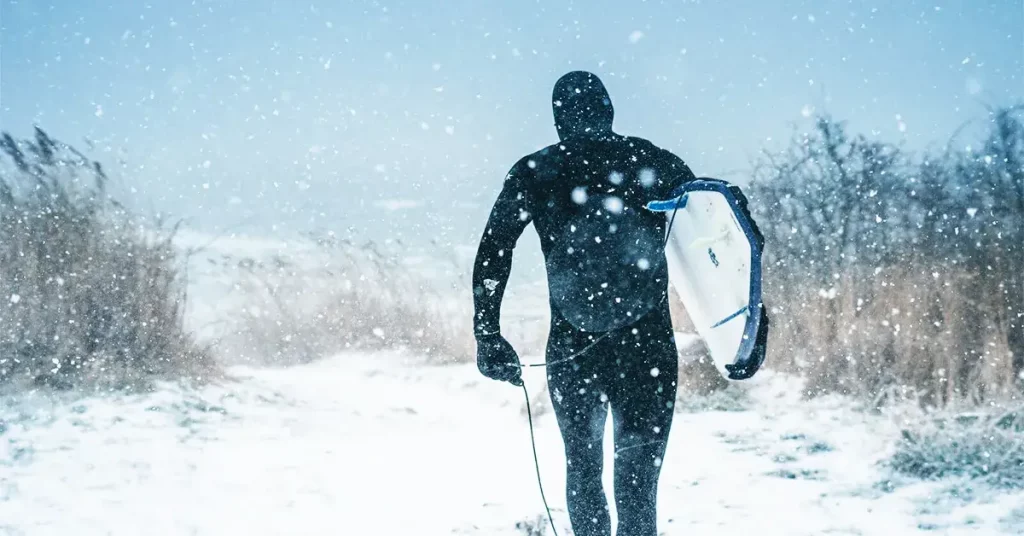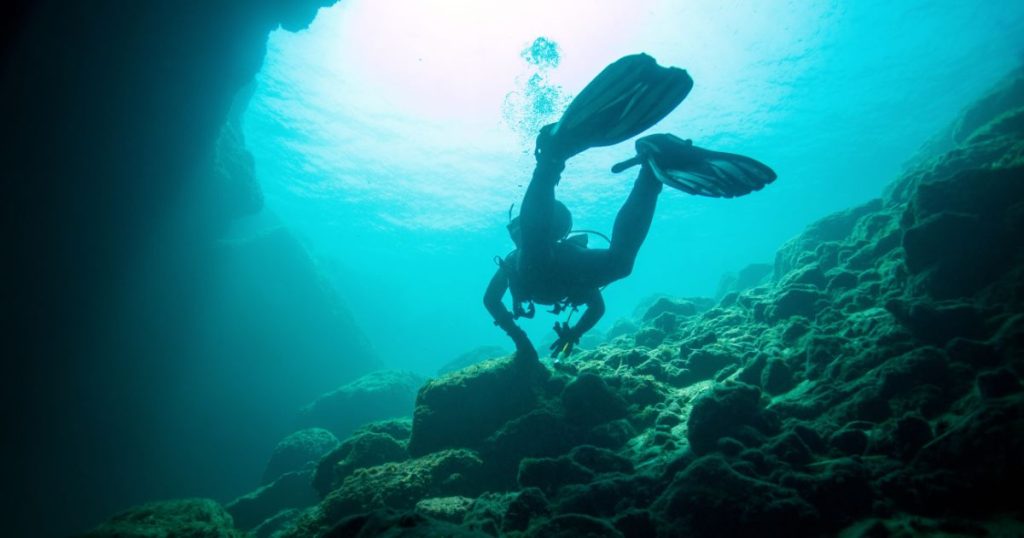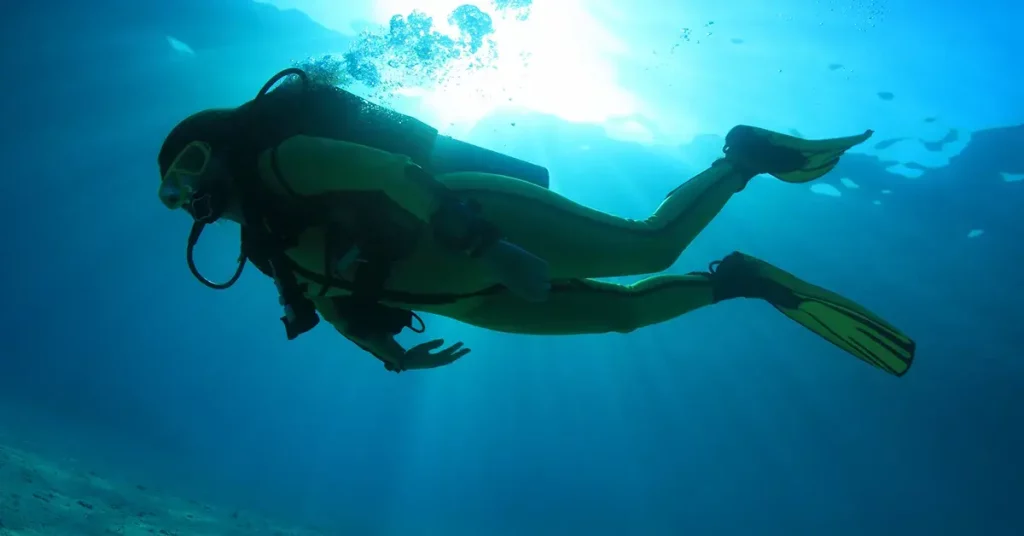If you’re wondering what the difference between a wetsuit and a drysuit is, you’re not alone. Many people are familiar with wetsuits for kayaking, diving, and other water sports, but unless you live in an environment with cold water, you may not be familiar with drysuits.
When the water temperature drops, you’ll need some way of keeping your body from freezing solid – the two main options are wetsuits and drysuits. Both work to keep your body warm and protected from the elements, but they differ greatly in terms of construction and functionality.
Let’s dive into the differences between wetsuits and drysuits, when to use them, and how to choose the right one for your needs.
Difference Between a Wetsuit and a Drysuit

While both wetsuits and drysuits work to keep you warm and protected in cold water, they are quite different and offer differing levels of warmth and protection.
Wetsuit vs Drysuit for Cold Weather
Wetsuits
Wetsuits work by trapping a thin layer of water between the neoprene material and your skin. This layer of water is then heated up from contact with your body – turning it into a warm insulating layer. Most wetsuits are made from neoprene, making them both warm and highly flexible.
Because they rely on a layer of trapped water for warmth, wetsuits take a while to warm up your body. When you hop into cold water, you’ll feel an initial cold shock from the water until it’s able to completely saturate the suit and warm up.
Drysuits
Drysuits are one-piece suits built to completely block water from getting into contact with your body. They utilize waterproof rubber seals at neck and wrist openings to prevent any water from seeping into the suit. Attached socks at the feet prevent water from entering there. The suit itself doesn’t provide much warmth – insulation is provided by the layers you wear beneath the suit.
Because they prevent water from getting into your suit, there’s no cold shock when you submerge into frosty water. You can jump into ice-cold water and not feel the cold at all! Combine that with the ability to add superior insulation, and you’ve got a far warmer suit than a typical wetsuit.
Mobility
While warmth is an important feature, there are other considerations to keep in mind when picking out a suit. Mobility can be a huge factor, especially when you’re kayaking, surfing, or any activity that requires a lot of movement.
Wetsuits generally provide a higher level of mobility that drysuits. Their form-fitting design is made to stretch and bend – providing a high level of flexibility. Thicker neoprene suits can slow down your mobility somewhat, but they remain skintight.
Drysuits have a looser fit than wetsuits, providing an increased range of motion and largely unrestricted movement. The loose fit can cause drag in the water though, and slow you down if you’re trying to swim over long distances. This increased bulk also adds weight to the suit – which can affect your performance in the water.
Comfort
This one ultimately comes down to personal preference. Generally, drysuits are more comfortable than wetsuits – especially when you’re wearing them for long periods.
If you’re participating in a sport with repetitive motions – like paddling a kayak – then the neoprene can rub against your skin and cause rashes. Unlike most wetsuits, drysuits won’t chafe your skin if you’re wearing one all day long.
Putting On and Taking Off
While it might not be the first thing you think of, the ease of putting on and taking off a suit is an important consideration. Wetsuits are generally easy to put on and take off, especially if they haven’t been in the water yet. Once they get wet, they’re a little more difficult to manipulate, but can still be put on without help.
Drysuits are a little more difficult to don than wetsuits, and often require a buddy’s help to put on and take off. They require you to layer on the neck and wrist seals before you put on the suit, which can get a little tricky.
Maintenance
Once you’ve got the suit, you’ll need to take care of it if you want it to last.
Wetsuits are pretty low maintenance, and only need to be rinsed in warm freshwater and left to air dry. To make sure they dry thoroughly, you’ll want to open all the zippers and allow the suit to dry while hanging away from direct sunlight.
Drysuits require a good deal more care. You’ll need to take special care of the latex seals and zippers, to prevent them from rotting and sustaining UV damage. After wearing, you’ll need to wash the suit inside and out with fresh water paying particular attention to the seals and zippers. Then leave the drysuit hanging in the open to air dry.
You’ll need to occasionally lubricate the zippers and talc the seals to keep them from deteriorating. When well cared for seals will last approximately 3 to 5 years. Minor tears can be fixed at home with a special adhesive, but will eventually need to be replaced.
Odor
While you might not think odor would be a major factor, if you’ve ever left a wetsuit in a dive bag for a few days without drying it out, you’ll know otherwise! Wetsuits can easily develop a foul odor from mildew, bacteria, sweat, and other bodily fluids, so you’ll want to be vigilant about washing and drying them. If an odor does develop, there are specialty wetsuit detergents you can use to remove the smell.
Drysuits, on the other hand, don’t tend to develop odors as easily. But they can be easily washed in detergent should they start to smell.
Price
While prices can vary widely, drysuits will generally cost a good deal more than wetsuits. A good drysuit will typically cost between $500 and $1500, while a quality wetsuit can be had for between $150 and $300.
It’s also worth considering the versatility of a wetsuit vs a drysuit. One drysuit can be used in a variety of water temperatures, and the level of insulation can be adjusted by altering the layers worn underneath. You’d need several different wetsuits of varying thicknesses to accomplish the same thing. Also, in water temperatures below 60° F (16° C), you’ll generally need a drysuit to stay warm, but you can also wear the same drysuit without insulation in warmer temperatures.
Longevity
As it’s a fairly major purchase, it’s a good idea to consider how long a wetsuit/drysuit will last.
When properly cared for, a regularly used wetsuit should last between 5 and 10 years. Drysuits, on the other hand, can last for 15 to 20 years when they’re well cared for.
As mentioned previously, drysuit zippers and seals will need to be replaced over the suit’s lifespan. But even when considering this, you’ll often get more value from a drysuit due to their extended lifespan. Drysuits also maintain their resale value to a large extent, while no one wants to buy a used wetsuit!
Wetsuit vs Drysuit Chart
If you’re looking for a quick recap to help you make a decision take a look at this chart:
| Wetsuit | Drysuit | |
| Water temp | Above 60° F | Below 60° F |
| Mobility | Higher | Lower |
| Comfort | Lower | Higher |
| Putting on/Taking off | Easier | Difficult |
| Maintenance | Low | High |
| Odor | Can be an issue | Less of an issue |
| Price | Lower | Higher |
| Longevity | 5 to 10 years | 15 to 20+ years |
When Should You Wear a Wetsuit vs Drysuit?

Ultimately the choice of when you should wear a wetsuit vs a drysuit comes down to your preferences, budget, and cold tolerance.
Another thing to consider is your specific sport or activity. In sports where you’re mostly in the water, a drysuit will keep you from getting wet but can impede your ability to swim freely. If you’re diving, surfing, or swimming, you’ll generally want to go with a wetsuit until it’s too cold to bear.
The opposite is true for out of water activities like kayaking, sailing, or stand up paddleboarding, where you spend most of the time outside the water. The loose fit of a drysuit works well outside of water and is less restricting/chaffing than wearing a wetsuit all day long.




